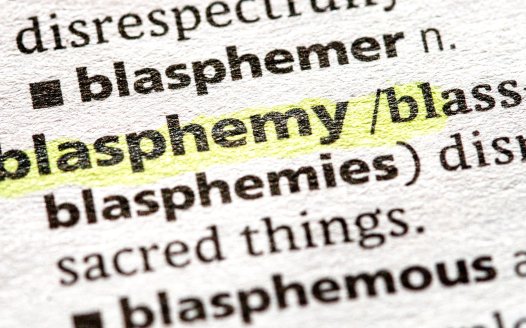Atheists respond in their thousands to ‘census’, but can we trust the data?
Posted: Sun, 20th Jan 2013 by Stewart Ware
In an attempt to capture demographic data on the non-religious, Atheist Alliance International has set up the Atheist Census. The aim is to capture each participant's religious background, educational level, age, sex and country of residence. In addition, participants are asked which non-religious term they would choose to refer to themselves, which include 'atheist', 'humanist' and 'freethinker'.
The census website was launched in early December 2012 but crashed several hours later owing to a denial of service attack. It is not possible to determine who was behind the attack, but naturally suspicions fall on religious groups. It was re-launched without incident a week later. The census appears to have no closing date, which means it has the potential to collect data indefinitely, funding permitting: it also solicits donations. At the time of writing, one month after the re-launch, the site had attracted nearly 170,000 responses from around the world.
The first thing to strike the casual observer is that this is not a census as normally perceived. A census according to one dictionary definition is "an official count or survey, especially of a population". Censuses are carried out by governments to gather information on the country's population, their location, age, household occupancy and so on. Participation is compulsory. This contrasts with the Atheist Census which is entirely voluntary with the participants being self-selecting. The census bears more relation to a survey conducted by a market research organisation, except that the former is 'opt-in' while the latter is 'opt-out'. A normal survey is driven by the organisation conducting it while this census is mainly driven by those who choose active participation.
Another difference is that the Atheist Census is entirely web-based with no user identification required other than an email address, which opens it up to potential abuse by participants using multiple email addresses, although this is mitigated by the time and trouble that people would experience in setting up each new email address, completing the census web form, waiting for the email confirmation email to arrive and responding by clicking on the link in the email. However, people who habitually use multiple email addresses will find the task less onerous.
Another potential problem is that it is open to attack from the religious, 'data vandals' and others, who may want to distort the data by feeding in fictitious responses. However, this would require a huge and serious effort to have any significant impact and even religious people have better things to do than spending their time trying to sabotage an atheist survey: praying, perhaps. Of course, by responding to the census they would artificially inflate the number of atheist participants, which rather defeats the object.
The people most likely to respond fall into a number of categories: those who are angry at the influence of religion in their country; those who like to differentiate themselves from most of the people around them; those who are active in the atheist, freethought and secular movements around the world, and so on. Those who are atheist or agnostic but who are not angry or upset by religion and who are otherwise unconcerned will either not know about the census or will not bother to participate.
We have to take it on trust that the information that participants supply is correct; since the census is not an official government initiative, they may feel they have a licence to be flexible with facts about themselves; however they have no reason to do so other than maliciously distorting the data as the collected data is anonymous.
It is with all these caveats in mind that we can look at the data that has been gathered in the month so far. Some striking observations from the global data include:
- The most popular title is 'atheist', with 63.6%; the least popular is 'secularist' with 1.5%.
- The largest religious background is Christianity with 65.4% (Catholic 31.7%). "None" accounts for 17.6%.
- Atheists tend to be highly educated: 60.1% have a first degree and 19.4% have a postgraduate degree.
- Atheists are young: 30.4% are aged 15–24 and 36% are aged 25–34; 84.5% are under 45.
- Male atheists outnumber female by a ratio of 3:1.
Inevitably, the largest response has been from the USA with just under 60,000; the UK response, the third largest after Brazil, has been in proportion to the USA population with nearly 12,000. If this ratio is maintained, and still considering the above caveats, it would suggest that the USA is not as religious as has hitherto been perceived; or perhaps that American atheists are more active. Interestingly, Turkey is the fourth largest response source with 10,000.
The data specific to the UK is roughly consistent with the global data.
Here are some of the UK variations:
- 'Atheist' is a slightly more popular title: 69.7%.
- Catholicism is only 14.3% of respondents' background.
- Atheists are somewhat older in the UK compared to globally: the 15–24 age group is 24.6% and the 25–34 group is 25.9%; only 73.3% are under 45.
- There are more male atheists: 77.9%, leaving only 21.6% female (there is an 'other' category which accounts for the remaining 0.5%).
This census is the largest survey of the global atheist population so far attempted and despite all the caveats it will be interesting to see how the data changes over time and whether academics and commentators will take any interest.







